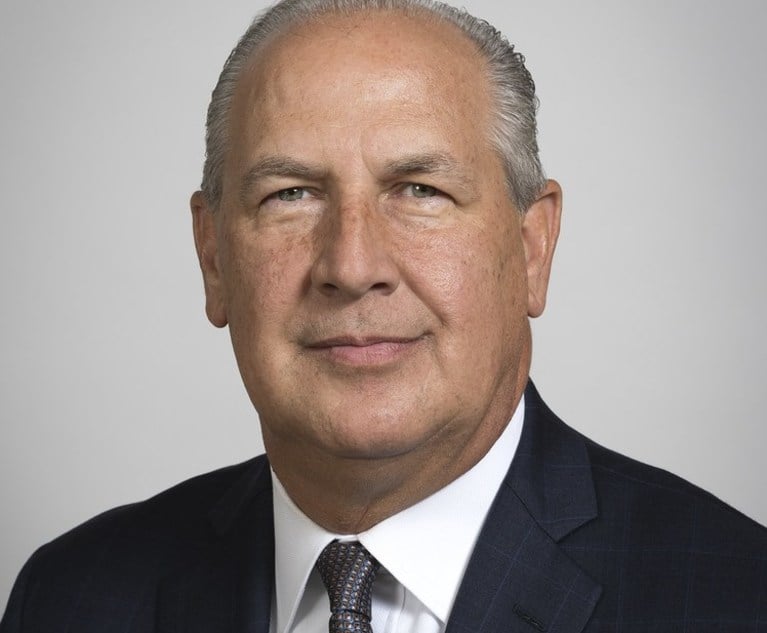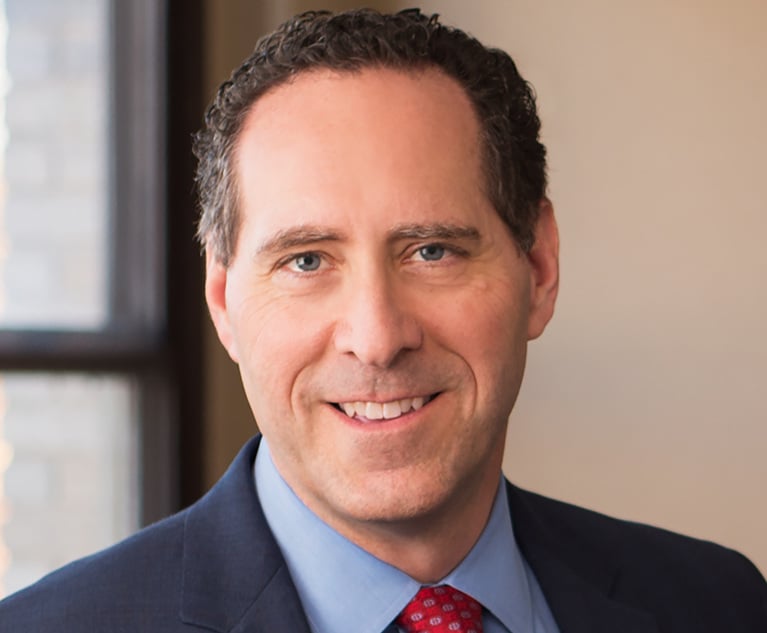New Year, New Rules—Does Return-to-Office Still Matter to Law Firm Leaders?
Leaders, rightly concerned with the cultural impact and absence of collaboration and development opportunities, began to explore ways to make hybrid work. Most publicly, firms instituted guidelines for when and how to be in the office.
January 13, 2023 at 12:06 PM
12 minute read
 Marcie Borgal Shunk, President and Founder of the The Tilt Institute Inc. Courtesy photo
Marcie Borgal Shunk, President and Founder of the The Tilt Institute Inc. Courtesy photo
Smart Strategy
Author's note: This article is a continuation of "Myth or Reality: Conquering the Enemies of Return-to-Office" published on Nov. 21, 2022.
Since the availability of a COVID vaccine, law firms have been grappling with the right hybrid work model. While some people barely missed a beat, the majority discovered the flexibility and increased productivity of working from home to be a welcome change. Leaders, rightly concerned with the cultural impact and absence of collaboration and development opportunities, began to explore ways to make hybrid work. Most publicly, firms instituted guidelines for when and how to be in the office. According to a snap poll conducted by The Tilt Institute on this topic in December 2022:
- Fewer than 10% have no return-to-office guidelines in place
- Nearly 60% of firms mandate three or more days in the office (with a notable similar number having different policies for lawyers and staff)
- Over 85% described their enforcement of policies as middling at best
Privately, many firms are attempting to encourage partners—often the most reticent to dive back in—through demonstrations of data on office attendance, subtle messaging about the value to associates, clients and culture, and, sometimes, not-so-subtle requirements attached to compensation and performance reviews.
The first article of this series, "Myth or Reality: Conquering the Enemies of Return-to-Office," outlined four perceived "truths" prevalent in the return-to-office discussion:
This content has been archived. It is available through our partners, LexisNexis® and Bloomberg Law.
To view this content, please continue to their sites.
Not a Lexis Subscriber?
Subscribe Now
Not a Bloomberg Law Subscriber?
Subscribe Now
NOT FOR REPRINT
© 2025 ALM Global, LLC, All Rights Reserved. Request academic re-use from www.copyright.com. All other uses, submit a request to [email protected]. For more information visit Asset & Logo Licensing.
You Might Like
View All
AI and Social Media Fakes: Are You Protecting Your Brand?

Trump RTO Mandates Won’t Disrupt Big Law Policies—But Client Expectations Might
6 minute read
Montgomery McCracken Touts 'Record' Financial Performance Despite Shrinking Head Count
6 minute read
Cohen Seglias Leader Discusses Growing From Construction Practice into Full-Service Law Firm
Trending Stories
- 1A.I. Depositions: Court Reporters Are Watching Texas Case
- 2Second DCA Greenlights USF Class Certification on COVID-19 College Tuition Refunds
- 335 Years After CT's Affordable Housing Act, Progress Remains a Struggle
- 4Bankruptcy Judge Clears Path for Recovery in High-Profile Crypto Failure
- 5Reality TV Couple and Pacific Palisades Neighbors Sue City of Los Angeles Over Loss of Homes to Fire
Who Got The Work
J. Brugh Lower of Gibbons has entered an appearance for industrial equipment supplier Devco Corporation in a pending trademark infringement lawsuit. The suit, accusing the defendant of selling knock-off Graco products, was filed Dec. 18 in New Jersey District Court by Rivkin Radler on behalf of Graco Inc. and Graco Minnesota. The case, assigned to U.S. District Judge Zahid N. Quraishi, is 3:24-cv-11294, Graco Inc. et al v. Devco Corporation.
Who Got The Work
Rebecca Maller-Stein and Kent A. Yalowitz of Arnold & Porter Kaye Scholer have entered their appearances for Hanaco Venture Capital and its executives, Lior Prosor and David Frankel, in a pending securities lawsuit. The action, filed on Dec. 24 in New York Southern District Court by Zell, Aron & Co. on behalf of Goldeneye Advisors, accuses the defendants of negligently and fraudulently managing the plaintiff's $1 million investment. The case, assigned to U.S. District Judge Vernon S. Broderick, is 1:24-cv-09918, Goldeneye Advisors, LLC v. Hanaco Venture Capital, Ltd. et al.
Who Got The Work
Attorneys from A&O Shearman has stepped in as defense counsel for Toronto-Dominion Bank and other defendants in a pending securities class action. The suit, filed Dec. 11 in New York Southern District Court by Bleichmar Fonti & Auld, accuses the defendants of concealing the bank's 'pervasive' deficiencies in regards to its compliance with the Bank Secrecy Act and the quality of its anti-money laundering controls. The case, assigned to U.S. District Judge Arun Subramanian, is 1:24-cv-09445, Gonzalez v. The Toronto-Dominion Bank et al.
Who Got The Work
Crown Castle International, a Pennsylvania company providing shared communications infrastructure, has turned to Luke D. Wolf of Gordon Rees Scully Mansukhani to fend off a pending breach-of-contract lawsuit. The court action, filed Nov. 25 in Michigan Eastern District Court by Hooper Hathaway PC on behalf of The Town Residences LLC, accuses Crown Castle of failing to transfer approximately $30,000 in utility payments from T-Mobile in breach of a roof-top lease and assignment agreement. The case, assigned to U.S. District Judge Susan K. Declercq, is 2:24-cv-13131, The Town Residences LLC v. T-Mobile US, Inc. et al.
Who Got The Work
Wilfred P. Coronato and Daniel M. Schwartz of McCarter & English have stepped in as defense counsel to Electrolux Home Products Inc. in a pending product liability lawsuit. The court action, filed Nov. 26 in New York Eastern District Court by Poulos Lopiccolo PC and Nagel Rice LLP on behalf of David Stern, alleges that the defendant's refrigerators’ drawers and shelving repeatedly break and fall apart within months after purchase. The case, assigned to U.S. District Judge Joan M. Azrack, is 2:24-cv-08204, Stern v. Electrolux Home Products, Inc.
Featured Firms
Law Offices of Gary Martin Hays & Associates, P.C.
(470) 294-1674
Law Offices of Mark E. Salomone
(857) 444-6468
Smith & Hassler
(713) 739-1250





